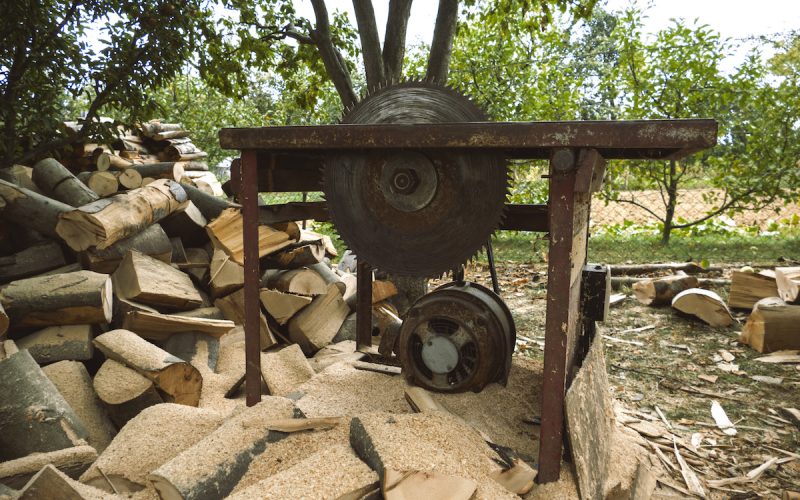To work out when the table saw was invented, we first need to look at what a table saw consists of. It is essentially a circular saw that is mounted to the underside of a table or surface. The table has a slit cut out of it to allow the blade to pass through and the material is slid along the table surface towards the blade.
A table saw is also known as a bench saw or sawbench depending on location and what it is being used for. To understand the history of the table saw we first need to look at the circular saw.
Circular Saw History
The first recorded patent for a circular saw build is credited to Samuel Miller in 1777. Samuel Miller was an Englishman from Southampton and probably got the idea from similar designs in Holland.
It was a very simple metal disc with teeth cut in around the edge and was heavy and cumbersome. It was found that when spun around at speed it was an effective cutting device for lumber. Originally it was driven by hand, unlike more modern machines that use electricity.
The circular saw style blade had however been in use for a little while so it isn’t clear who was the first to come up with this design. They are originally used for cutting timber in sawmills on a large scale. Often these circular saws were connected to a water wheel that was geared up to provide the rotational speed needed for cutting. These quickly become the woodworker’s tool of choice and have only increased in popularity since.
Invention of the Table Saw
The machine that is now more commonly known as the table saw was not invented for another 150 years. A catalog from 1885 depicts a style that we would be more used to today, by W.F. & John Barnes Co.
At first, the table saw was called a “Hand circular rip saw” and it had a fixed arbor and table. You had to move the table up and down to change the blade height. This original table saw was a treadle powered. This meant that the woodworker had to use their feet to rotate the blade.
The John Barns table saw was similar to a traditional sawing machine. However, due to its weight it wasn’t very portable. This changed in 1929 when Art Emmons designed a portable version to be used on building sites. It had an in-built electric motor to drive the table saw blade and could be transported easily. It is this upgrade from the foot pedal design that has led to the design that we still use today.
Recent Table Saw Improvements
Table saws have come a long way since the 18th century and are now a lot safer to use. There are multiple different types depending on your needs. This includes cabinet table saws, job site table saws, benchtop table saws, and even sliding table saws.
The biggest improvements have come from the safety features that we go into more detail here. Automatic blade breaking and flesh detection systems now come built into some table saw brands. These instantly stop and retract the blade as soon as it senses a conductive material such as your skin. There are also multiple different fittings to reduce kickback and keep your hands clear of the blade such as splitters and table saw fences.
Table saws have become more versatile than ever, offering a wide variety of different cuts and applications. It is no wonder that they are still the most popular tool in the average Americans Woodworking shop. They have an interesting history and we are sure that there are many more improvements yet to come.






